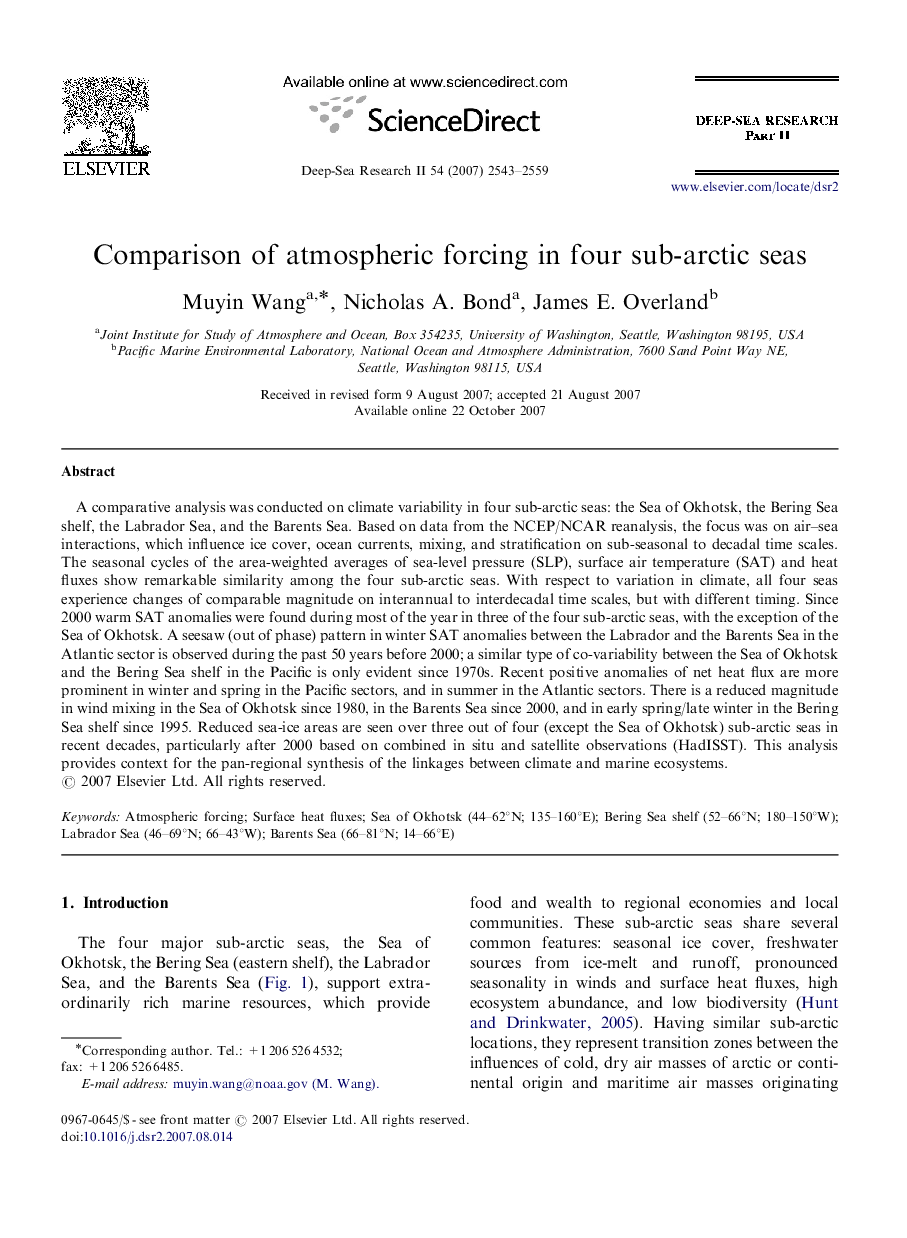| Article ID | Journal | Published Year | Pages | File Type |
|---|---|---|---|---|
| 4538172 | Deep Sea Research Part II: Topical Studies in Oceanography | 2007 | 17 Pages |
A comparative analysis was conducted on climate variability in four sub-arctic seas: the Sea of Okhotsk, the Bering Sea shelf, the Labrador Sea, and the Barents Sea. Based on data from the NCEP/NCAR reanalysis, the focus was on air–sea interactions, which influence ice cover, ocean currents, mixing, and stratification on sub-seasonal to decadal time scales. The seasonal cycles of the area-weighted averages of sea-level pressure (SLP), surface air temperature (SAT) and heat fluxes show remarkable similarity among the four sub-arctic seas. With respect to variation in climate, all four seas experience changes of comparable magnitude on interannual to interdecadal time scales, but with different timing. Since 2000 warm SAT anomalies were found during most of the year in three of the four sub-arctic seas, with the exception of the Sea of Okhotsk. A seesaw (out of phase) pattern in winter SAT anomalies between the Labrador and the Barents Sea in the Atlantic sector is observed during the past 50 years before 2000; a similar type of co-variability between the Sea of Okhotsk and the Bering Sea shelf in the Pacific is only evident since 1970s. Recent positive anomalies of net heat flux are more prominent in winter and spring in the Pacific sectors, and in summer in the Atlantic sectors. There is a reduced magnitude in wind mixing in the Sea of Okhotsk since 1980, in the Barents Sea since 2000, and in early spring/late winter in the Bering Sea shelf since 1995. Reduced sea-ice areas are seen over three out of four (except the Sea of Okhotsk) sub-arctic seas in recent decades, particularly after 2000 based on combined in situ and satellite observations (HadISST). This analysis provides context for the pan-regional synthesis of the linkages between climate and marine ecosystems.
